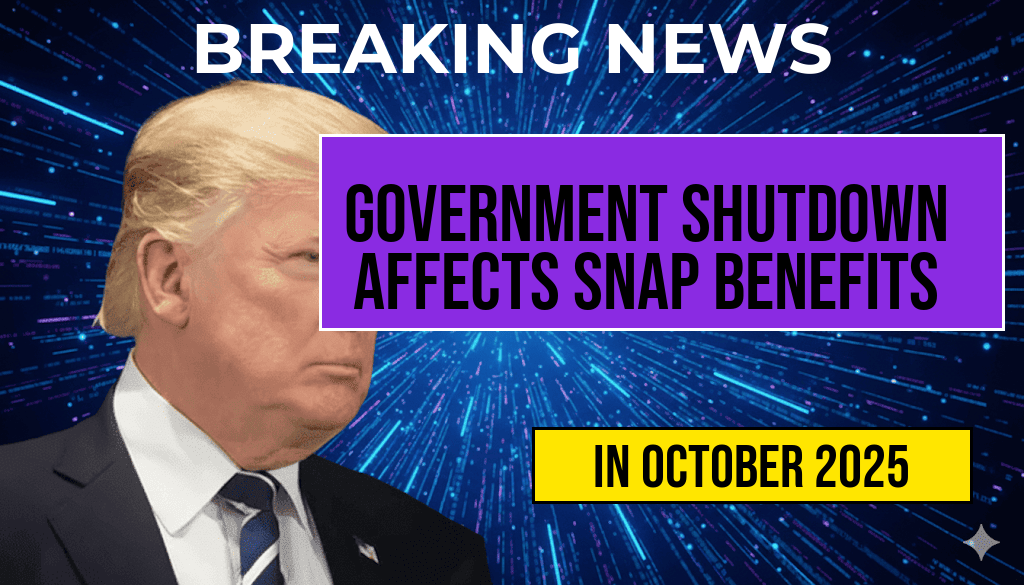The looming threat of a government shutdown has raised concerns across numerous social programs, with SNAP benefits (Supplemental Nutrition Assistance Program) and food stamp assistance at the forefront. If a shutdown occurs, it could disrupt the timely distribution of benefits to millions of vulnerable Americans, creating immediate hardship for those relying on these programs for daily sustenance. While some federal agencies have contingency plans, the uncertainty surrounding funding levels means that recipients may face delays or reductions in assistance. This article explores how a government shutdown might impact SNAP recipients, the potential policy responses, and the broader implications for food security nationwide.
Potential Immediate Effects on SNAP Recipients
During a government shutdown, federal agencies responsible for administering SNAP typically operate under limited funding, often leading to temporary suspensions or delays. The U.S. Department of Agriculture (USDA), which oversees SNAP, has provisions to ensure that benefits scheduled for distribution during the shutdown period are paid out, but this depends on the duration and severity of the funding lapse.
For households relying on monthly benefits, any disruption could mean a gap in food purchasing power, forcing many to cut back on meals or seek additional assistance through local charities. The USDA has indicated that, for now, SNAP benefits scheduled in the regular cycle are generally protected for the immediate period of a shutdown. However, if the shutdown extends beyond a few weeks, the risk of delayed payments increases, especially for recipients whose benefits are issued via electronic benefit transfer (EBT).
Policy Measures and Contingency Plans
Federal Strategies to Mitigate Impact
- Use of Reserve Funds: The USDA can draw from emergency reserves to maintain benefit payments temporarily, but these reserves are finite.
- State-Level Interventions: Some states may allocate emergency funds or expedite payments to mitigate disruptions, although capacity varies widely.
- Extension of Benefits: In some cases, congressional action could authorize the extension of benefits or provide supplemental funding.
Limitations of Emergency Measures
While these strategies can soften the impact, they are not sustainable long-term solutions. The scale of a shutdown can overwhelm contingency plans, especially if it coincides with other federal program disruptions. Moreover, the administrative backlog may lead to delays in processing new applications or recertifications, further complicating efforts to assist vulnerable populations.
Broader Implications for Food Security
| Region | Number of Recipients | Potential Impact |
|---|---|---|
| National | Approximately 41 million | Potential delays in benefit issuance, increased food insecurity |
| States with Largest SNAP Populations | California, Texas, Florida | Greater risk of hardship, strain on local food banks |
The food insecurity risk heightens during government shutdowns, especially among low-income families, seniors, and individuals with disabilities. Many of these households operate on tight budgets, with limited savings to buffer potential delays. Food pantries and charitable organizations often experience increased demand during such periods, stretching their resources thin.
Long-Term Considerations and Policy Debates
The debate over federal funding for social programs like SNAP often intensifies during shutdown episodes. Critics argue that budget constraints threaten to undermine essential safety nets, while proponents emphasize fiscal responsibility. The shutdown exposes vulnerabilities in the social safety net, prompting calls for reforms that ensure continuous support regardless of political gridlock.
Legislators are under pressure to pass temporary funding measures or long-term solutions that safeguard benefits. Some have proposed legislation to make SNAP payments more resilient to funding interruptions, including automatic triggers for benefit continuation during crises. These proposals aim to stabilize assistance and prevent hardship among the nation’s most vulnerable populations.
Resources and Support During Uncertainty
Individuals concerned about potential disruptions should stay informed through official channels such as the USDA (https://www.fns.usda.gov/snap) and their state agencies. Local food banks and community organizations also serve as vital resources during periods of federal funding uncertainty. Many provide emergency food supplies and vouchers to help bridge gaps during delays.
For more detailed information about SNAP and related programs, consult resources like the Wikipedia entry on SNAP or the USDA’s official site. Staying engaged and informed can help households prepare for potential disruptions and access available support networks.
Frequently Asked Questions
What is the impact of a government shutdown on SNAP benefits?
A government shutdown can temporarily suspend or delay SNAP benefits, potentially causing disruptions for recipients who rely on consistent food assistance. The extent of the impact depends on the duration of the shutdown and federal funding decisions.
Will existing Food Stamp benefits be affected during a shutdown?
In many cases, Food Stamp benefits that have already been issued may continue to be used as usual during a shutdown. However, new benefit issuance and administrative functions might be delayed or reduced.
How long could SNAP assistance be disrupted during a government shutdown?
The duration of disruption depends on how long the government remains shutdown. Short-term shutdowns may have minimal effects, while prolonged closures could lead to significant delays in benefit distribution and program operations.
Are there any measures in place to protect SNAP recipients during a shutdown?
Some states or agencies may have contingency plans to ensure that SNAP benefits are provided without interruption for a limited period. However, overall assistance levels and administrative support may be temporarily affected.
What should SNAP beneficiaries do if their benefits are delayed due to a shutdown?
If SNAP benefits are delayed, recipients should contact their local assistance office for guidance and consider accessing local food banks or community resources to meet their immediate food needs during the disruption.






